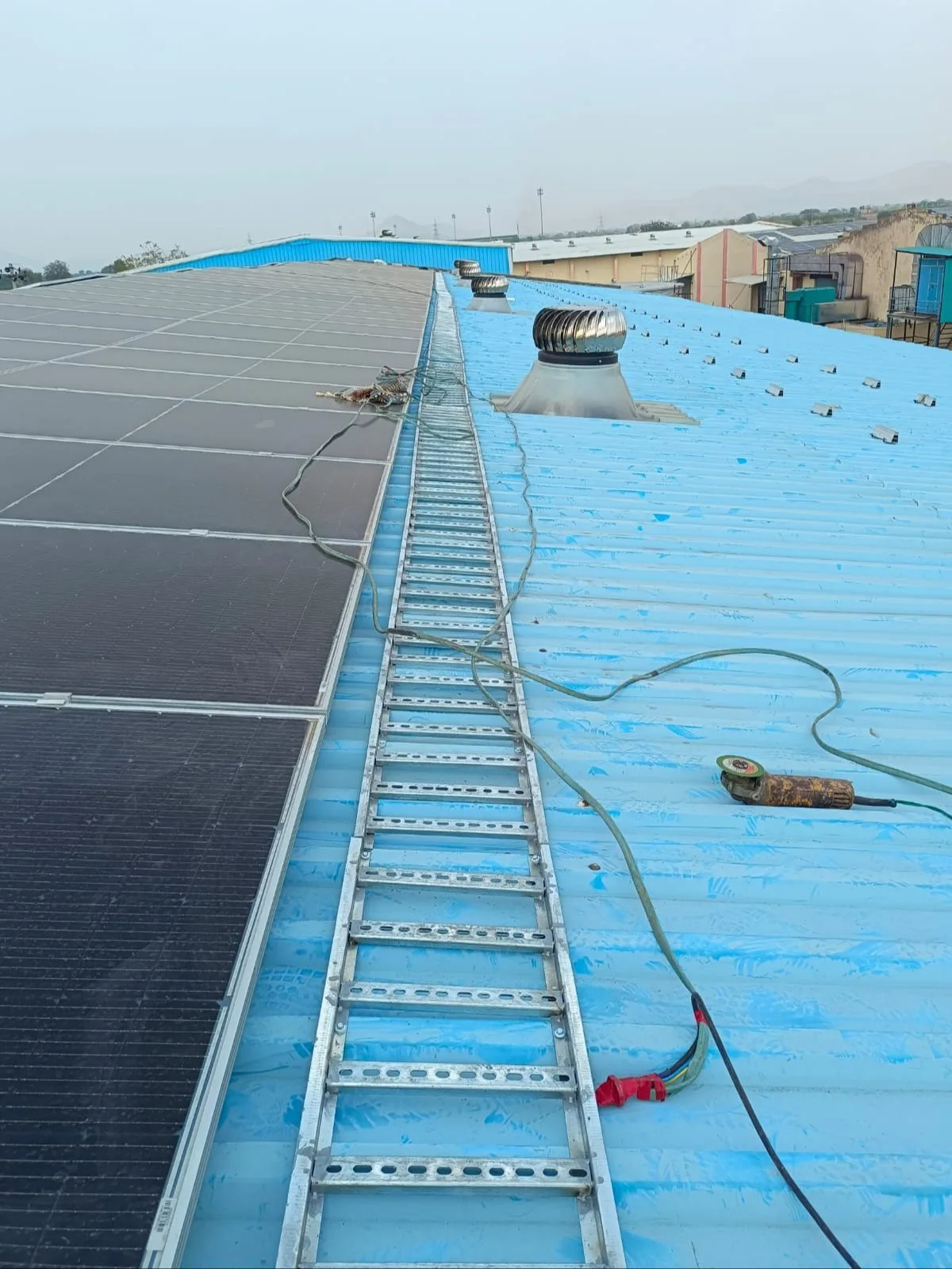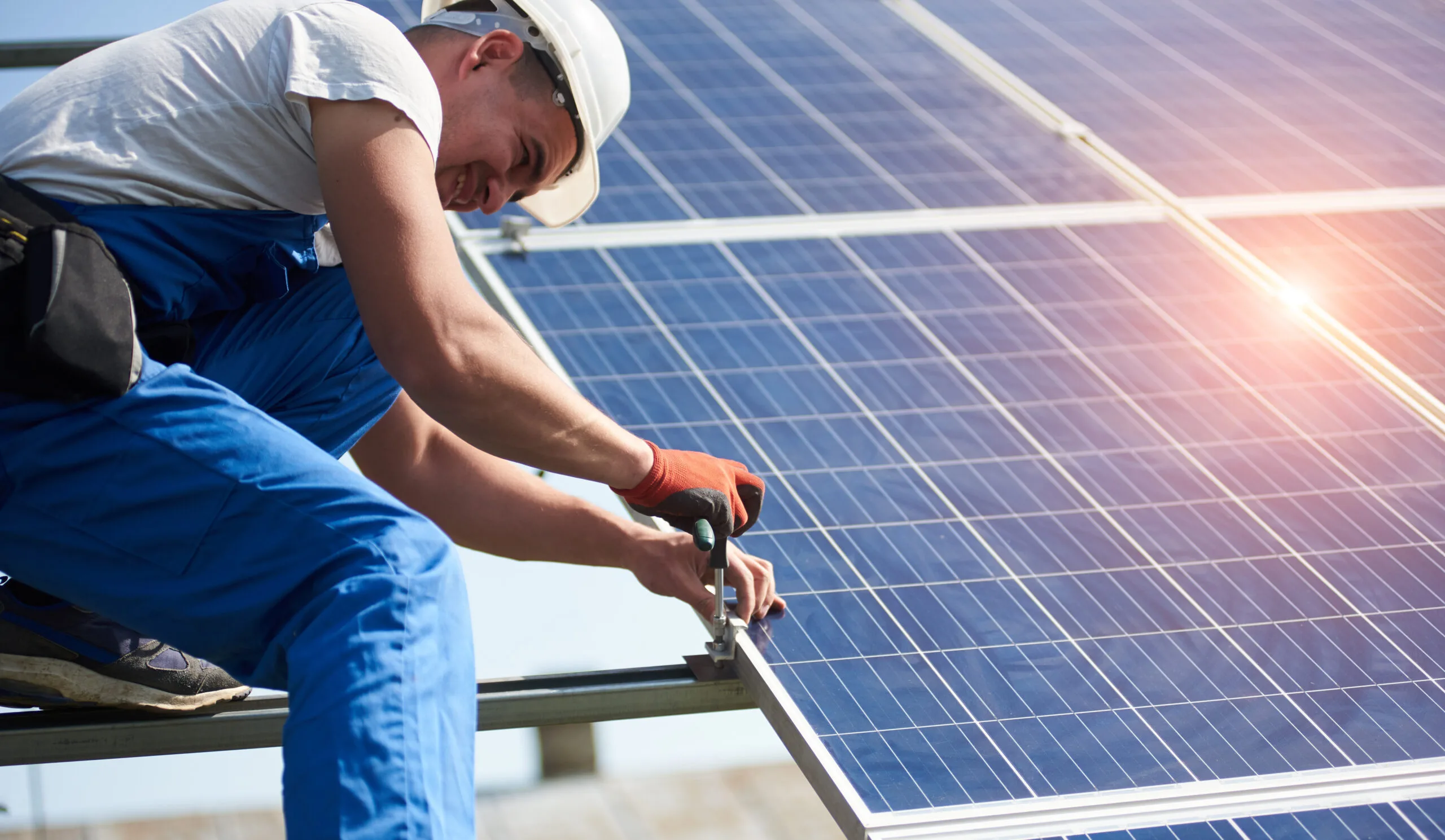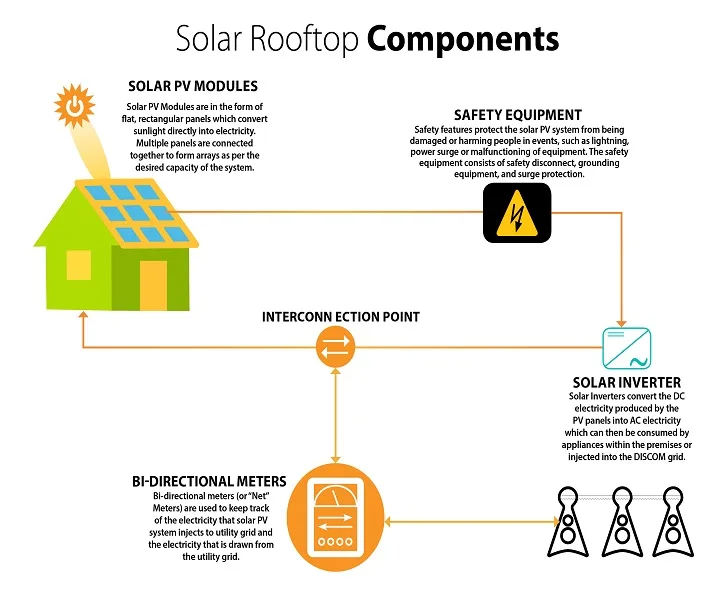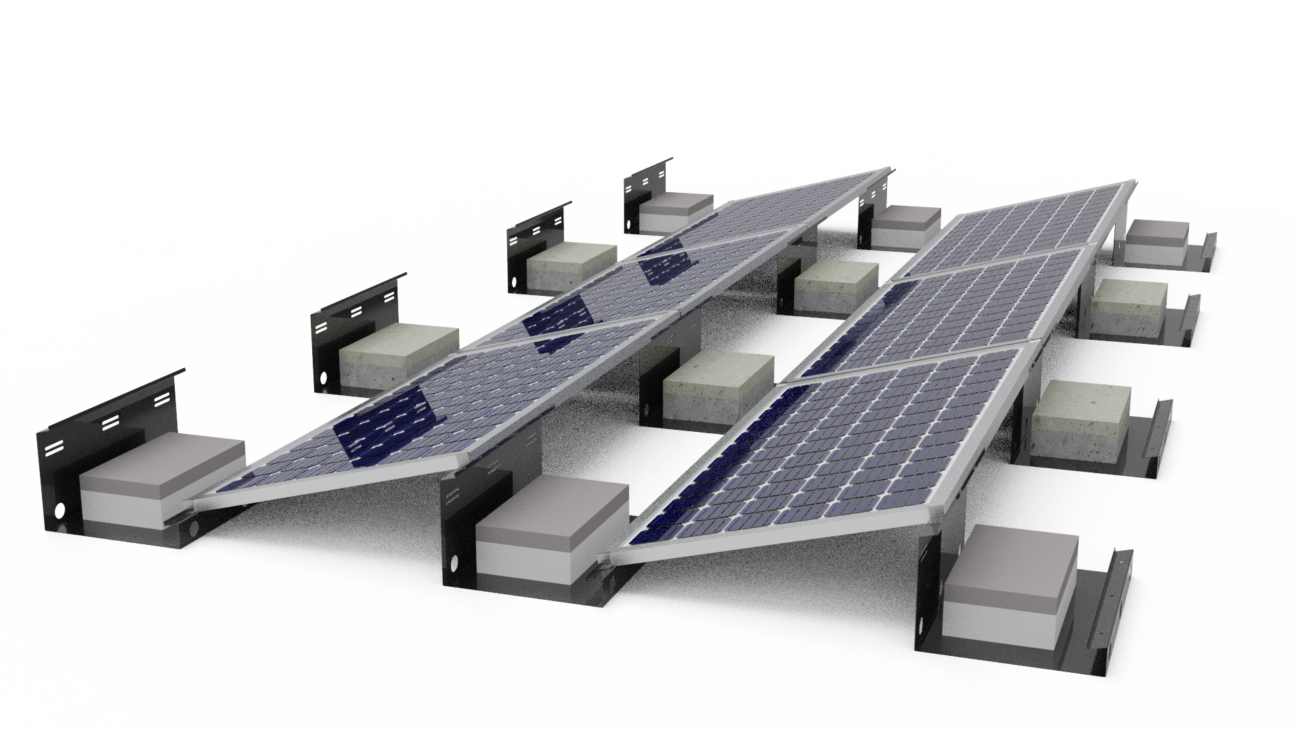
I. Introduction to Flat Roof Solar Mounting Systems
The “Structura Metal” provide installing solar panels on flat roofs is becoming an increasingly popular option for both homes and businesses looking to be utilize renewable energy. Flat roofs provide ample vacant space for mounting solar PV systems and solar thermal panels. While pitched rooftops can also accommodate solar arrays, flat roofs offer some unique advantages.
1. Benefits of Flat Roof Solar
- More flexibility in panel orientation and tilt angle for optimal sunlight capture
- Ability to install larger solar arrays more easily
- Less visibility of panels from street level
2. Types of Flat Roof Mounting Systems
There are two main types of solar mounting systems used on the flat roofs:
- Free-standing/Ballasted: Panels are fixed onto frames and weighted down without penetrating the roof
- Attached/Penetration: Panels are anchored to rails attached directly to the roof surface
Ballasted systems avoid compromising the integrity of the waterproof roof membrane. However, attached systems typically withstand higher wind loads.
3. Flat Roof Solar Panel Options
| System Type | Description | Considerations |
| Solar PV | Converts sunlight into electricity | Requires wire connection to building |
| Solar thermal | Heats water from sunlight | Integration with hot water system |
“Structura Metal” gives a proper site evaluations and safety precautions by qualified solar professionals are crucial when installing panels on flat roofs. Key factors like roof strength, panel wind resistance, and placement optimization should be addressed during the planning process.
With smart design and strategic mounting selections tailored to the specific roof, flat spaces can be successfully transformed into the efficient solar hubs. Flat roof solar offers property owners a versatile platform to harness renewable energy.
II. Key Considerations for Flat Roof Solar
Installing a solar system on a flat roof requires careful planning and preparation to ensure optimal performance and safety. Here are some of the most important factors to consider:
A. Roof Structure and Condition
- A structural assessment is vital to verify the roof can handle the additional weight of solar panels and mounting systems
- The roofing material and age impacts the choice of mounting method
- Reinforcing the structure may be necessary for older or weaker roofs
B. Orientation and Panel Tilt
- Optimal tilt angle depends on the latitude and climate
- Angled mounts typically used to maximize solar gain
- Adequate spacing prevents inter-row shading
C. Weather Resistance
- Wind resistance varies by mounting type:
| System | Withstands |
| Ballasted | Up to 100 mph |
| Attached | Over 110 mph |
- Snow load capacity also factors into structural requirements
D. Accessibility and Maintenance
- Walkways facilitate safe access
- Sufficient clearance eases system upkeep and repair
- Cabling should be neatly managed
Careful flat roof solar design to optimize the energy generation and safeguards the roof’s integrity. Consult closely with qualified solar professionals during the process.
III. Residential Flat Roof Solar Solutions

Homeowners with flat roofs made of materials like concrete, membrane, tar and gravel, or torch down have several good solar mounting options. Residential flat roof solar systems allow households to generate their own clean energy through photovoltaic panels or solar water heating.
A. Solar Panel Mounting Methods
| System | Description |
| Non-penetrating | No roof holes, relies on ballast weight |
| Penetrating | Attached with roof fasteners |
B. Non-Penetrating Ballasted Mounts
- Ballast mounts secure panels without penetrating roof
- No risk of leaks or voids in roof warranty
- Concrete blocks or gravel often used as ballast
This is the fastest and simplest residential flat roof solar installation method. However, snow load capacity and wind resistance is lower than a penetrating system.
C. Concrete and Membrane Roofs
For poured concrete roofs or membrane waterproofing:
- Attached penetration mounts may be preferred
- Ensure proper flashing & seals around anchors
Proper structural support and weatherproofing is the key for roof health.
We consult a qualified solar pro to determine the optimal mounting solutions for your flat roof type and conditions. Careful design tailored to your roof ensures reliable, efficient solar array performance.
IV. Commercial Flat Roof Solar Solutions
Businesses with ample flat roof space are ideal candidates for large-scale solar arrays. Commercial sites allow for solar installations that can offset a significant portion of the building’s electricity usage.
A. Benefits of Commercial Scale Flat Roof Solar
- Cost-saving through reduced utility bills
- Enhanced sustainability profile
- Increase property value
- Easier emergency power integration
B. Types of Systems for Large Commercial Roofs
- Expansive fields of angled solar PV panels
- Solar thermal arrays for water heating needs
- Options for attached and ballasted mounting
C. Specially Designed for Heavy-Duty Applications
Solar mounting systems made for commercial projects feature:
- Capability to handle the large-format modern solar panels
- Robust structural components
- Withstand intense wind, snow etc.
- Streamlined installation process
Maximizing sunlight exposure is the key through strategic panel placement and tilt optimization.
V. Local Regulations and Policies
In “Structura Metal” the installation of solar panels on a flat roof is subject to various building codes, regulations, and construction policies depending on your jurisdiction. Navigating the relevant rules is key for smooth project execution.
A. Building Codes
- Local statutory codes dictate structural, fire safety, wiring and the other requirements
- Qualified solar professionals handle integration of code-compliant components
B. Planning Permissions
- Planning permissions needed for:
- Conservation or historic areas
- Development approvals
- Grid connection policies
- Streamlined approval processes available in some areas
C. Homeowner Associations
- HOA aesthetics rules may apply
- Rooftop equipment restrictions to be consider
D. Incentives and Rebates
Many municipalities offer programs like:
- Solar feed-in tariffs
- Renewable energy rebates
- Property tax exemptions
Confirm eligibility criteria before designing system.
Thorough research into local ordinances, utility policies, community rules, and incentive programs is strongly advised prior to installing. This ensures your flat roof solar project proceeds smoothly while conforming to all applicable regulations.
VI. Installation of Solar Systems on Flat Roofs

Installing the solar panels on a flat roof requires careful planning and execution to ensure optimal performance and safety. There are key considerations when mounting solar systems on flat roofs:
- Structural integrity
- Waterproofing
- Panel orientation
- Mounting system
A. Structural Integrity
The existing flat roof structure must be assessed to verify it can handle the additional weight of the solar array and mounting system. An engineer should conduct load calculations to determine:
- Number of solar panels the roof can support
- Weight of mounting system
- Wind and snow load capacity
If needed, the roof can be reinforced to increase its structural capacity for the solar setup.
B. Waterproofing
With ballasted systems, waterproofing is less of a concern since they do not penetrate the roof membrane. However, non-penetrating mounts may still require flashing or seals around the attachment points to prevent the moisture issues. It’s vital not to be compromise the roof’s water resistance.
C. Orientation and Tilt
Optimal panel tilt for maximum energy yield:
| Region | Tilt Angle |
| Lower latitude | 10-20° |
| Mid-latitude | 15-25° |
| Higher latitude | 25-35° |
Azimuth angle will vary by location.
D. Mounting System
Flat roof mounting system options:
- Ballasted: Concrete blocks secure structure
- Non-penetrating: Attached without the roof membranes penetration
- Mechanically attached: Secured with the roof membrane penetration
An installer will be determine the ideal mounting based on climate, loads, and roof type. Proper installation is key for a long-lasting solar system.
Residential flat roof solar setups have unique needs versus large commercial projects. Always consult with qualified solar professionals.
VII. Electrical Components for Flat Roof Solar

Properly designing and installing the electrical system is critical for a functional and safeflat roof solar array. Key electrical components include:
- Solar panels
- DC wiring
- Flat roof mounting system
- Inverter
- AC wiring
A. Solar Panels
- Silicon photovoltaic cells generate DC electricity
- Connected in series into strings
B. DC Wiring
- Connects solar panels into strings
- Plug-and-play MC4 connectors
- Copper wiring sized for voltage drop
C. Inverter
- Converts DC to AC power
- Required for grid connection
- Properly sized for your system’s total wattage
D. AC Wiring and Breakers
Safely delivers power:
- From inverter to electrical panel
- Through appropriate conduit
- With adequately sized breakers
Considerations for flat roof solar:
- Wire management for safety and neatness
- Accessibility for maintenance
- Protection from weather and pests
Consult an experienced solar installer to ensure proper electrical setup.
IX. Maintenance Needs for Flat Roof Systems
Regular maintenance is essential for the optimal performance and longevity of a flat roof solar system. Key maintenance tasks include:
A. Inspections
- Annual check of all components
- Check electrical connections are tight
- Ensure no damage from weather/pests
B. Panel Cleaning
- Dirt and dust reduce efficiency
- Clean 1-4 times per year
- Use soft brush and mild cleaner
C. Vegetation Management
- Trim back nearby trees
- Prevent excessive shading
D. Mounting Bolts
- Check mounting bolts are tight
- Tighten as needed
E. Waterproofing
- Inspect water barriers around mounts
- Repair flashing if damaged
F. Wiring
- Replace cracked wire conduits
- Flat roof mounting systems make panels accessible. Best practice is to create walkways between panel rows for easy maintenance.
- For commercial roofs, regular maintenance improves system performance over a 20-30 year lifetime. Consider a maintenance contract when installing solar.
X. Cost Savings From Flat Roof Solar
Installing a flat roof solar system represents a significant upfront investment, but the long-term savings can make it financially worthwhile:
- Solar panels have a useable lifespan of 25-30 years
- Savings from reduced electricity bills continue over system lifetime
- Payback period typically 4-8 years
Other cost savings:
- State/federal tax credits and solar incentives
- Low maintenance costs
- Increased property value
ROI is maximized with high system efficiency through:
- Optimal flat roof mounting
- Proper panel orientation
- Quality components
- Regular maintenance
For proper guidance Structura Metal provide a solar professional to evaluate potential energy cost savings from a flat roof solar system specific to your property.

